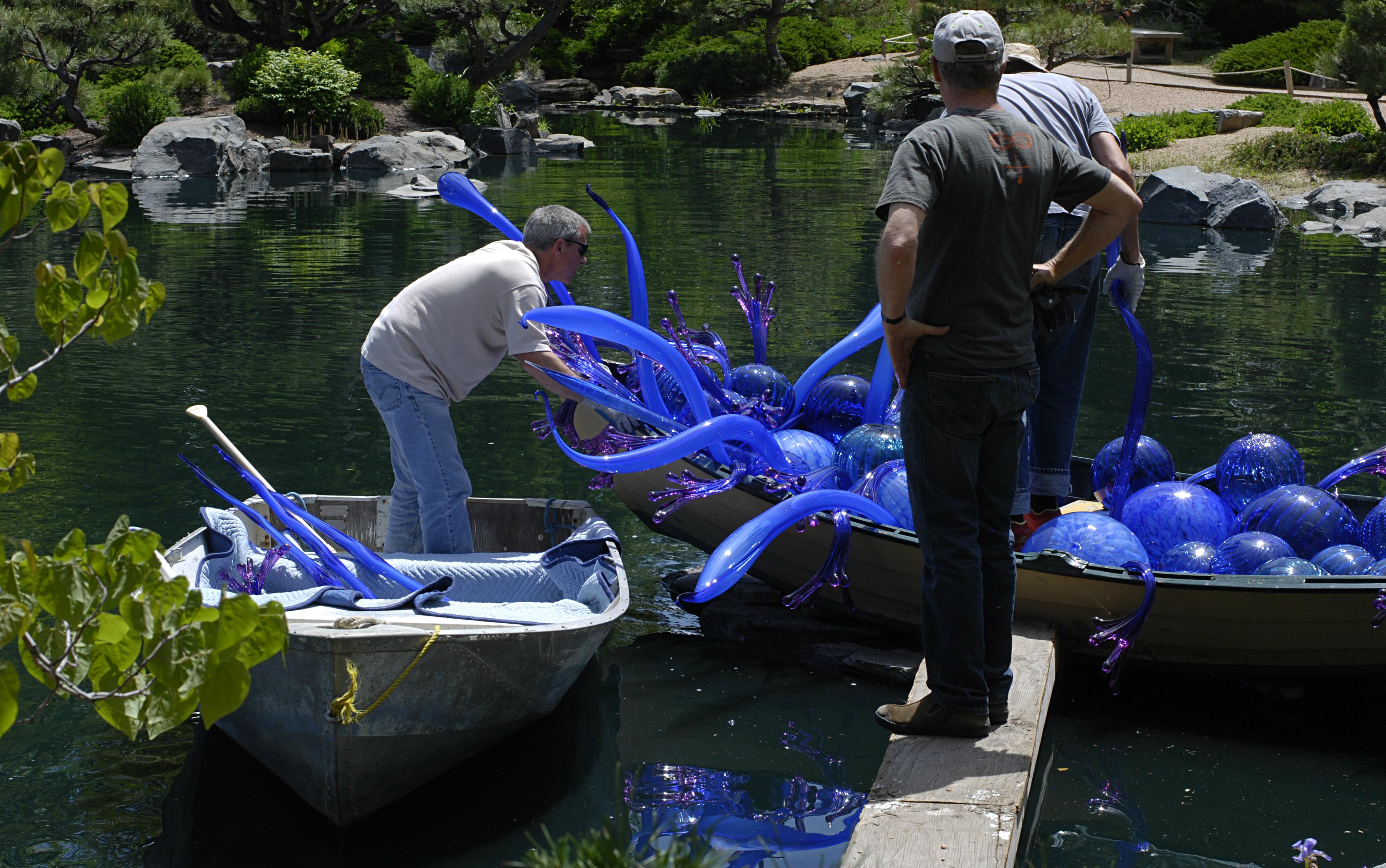
After more than three years of planning, this weekend the Denver Botanic Gardens opens its outdoor exhibition of glass artwork by Dale Chihuly.
Chihuly is one of the best known artists in glass sculpting.
And while the work may bear only the artist’s name, it takes a lot of people to make sure it survives the more than 1,300-mile trek from a shipping facility in Tacoma, Wash., to Denver.
In anticipation of the exhibition, CPR arts reporter Corey Jones visited the Denver Botanic Gardens during installation to find out more about how these ornate, fragile glass art works – some worth tens of thousands of dollars – are protected.
Here are some stats:
- The Seattle-based Chihuly Studio shipped thousands of individual glass pieces wrapped in foam and carefully packed in hundreds of heavy-gauge cardboard boxes.
- The boxes, along with armatures, hardware and tools, filled six 53-foot tractor trailers, stretching about the length of a football field.
- A team of 11 Chihuly Studio employees facilitated the 17-day installation.
- The exhibition includes 14 works stretching across the 24-acre Denver Botanic Gardens.
- The work titled “Summer Sun” is constructed from nearly two thousand pieces. The work's spiraling red, orange and yellow strands form a brilliant ball that stands 14 feet tall.
- “Summer Sun” weighs 3,500 pounds, about the same as a Subaru Outback.
- A donated Chihuly chandelier hangs inside Denver’s Ellie Caulkins Opera House. It cost nearly $230,000 in 2005.
- In 2011, the Museum of Fine Arts Boston turned to the public to help raise $1 million in order to buy a 42-foot Lime Green Icicle Tower on display during its own exhibition.
The 72-year-old artist’s career spans nearly five decades. And after all that time, team Chihuly has the packing and shipping process down to a science.
“It is fragile, and it’s kind of stressful,” shipping head Paul Arnhold says.
The Tacoma-based Arnhold started working with Chihuly more than 15 years ago. He says only around four pieces of glass broke during the trip to Denver.
“You’re stacking glass on glass on glass," Arnhold says. "Things break occasionally, that’s part of the job."
Denver-based art project manager and former public art program manager John Grant coordinates public installations around the country.
“Transporting a piece of glass artwork really follows almost identical procedures and processes that a painting or sculpture made from other materials would follow,” Grant says.
On the other hand, the insurance coverage for glass art can cost much more than other types of art, according to Jennifer Schipf. Schipf oversees fine art policies in North America for XL Specialty Insurance.
“Glass represents probably the highest degree of damageability of any type of art I can think of,” Schipf says.
Chihuly studio usually mounts two major exhibitions a year, of which one is usually an outdoor show, like Denver's.
So what if something breaks?
“We’ll typically have a backup plan in that we send some extra elements for if something breaks on site, then we have replacement,” Chihuly Studio head of exhibitions Britt Cornett says.
An organization that hosts a Chihuly exhibition typically covers the cost of shipping and insurance. Denver Botanic Gardens director of exhibitions Lisa Eldred isn’t concerned about broken glass.
Even considering the hail that’s hit the metro area recently, Eldred says the glass is designed to be durable.
“Whether we have bronze artwork out in the Gardens, bamboo art, or paintings, we really treat and evaluate the object the same way,” Eldred says.









